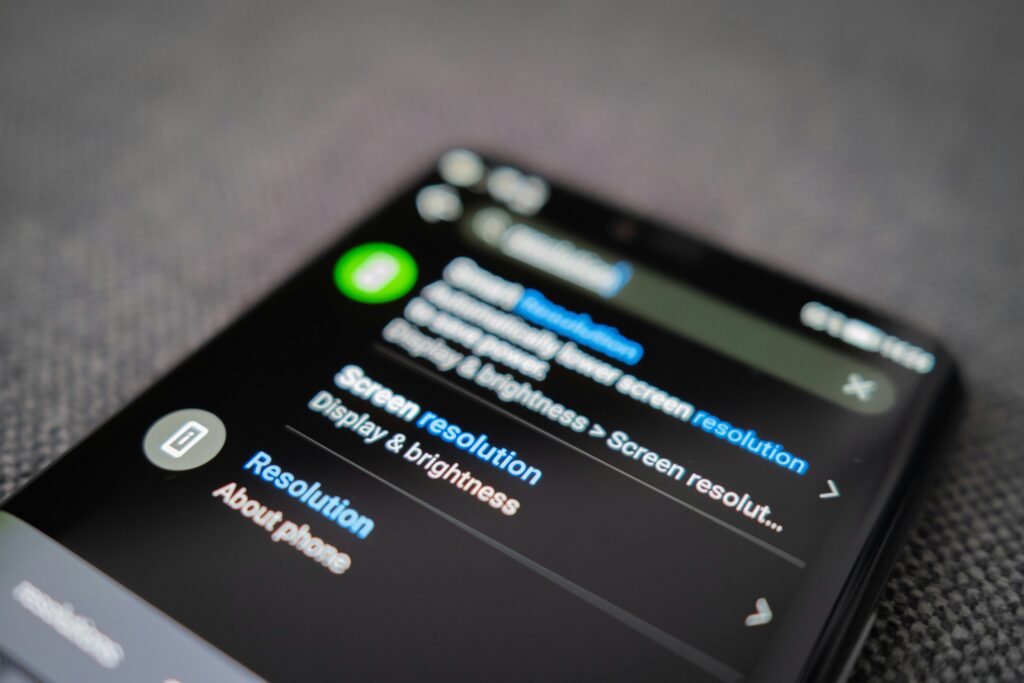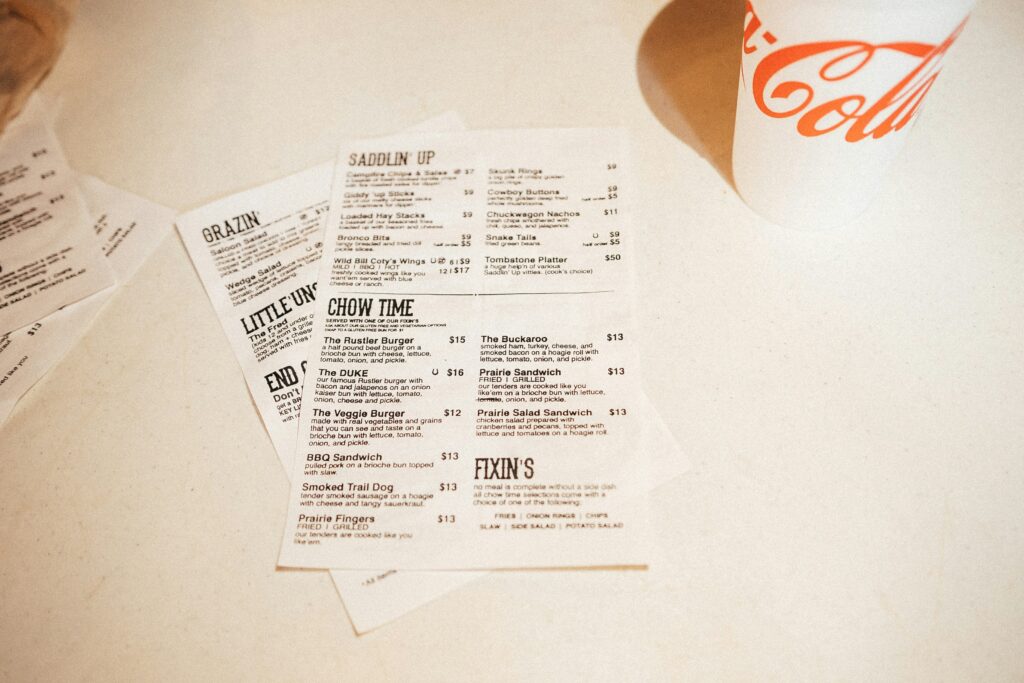13 Overlooked Expenses That Are Ruining Your Budget

You know that frustrating moment when you check your bank account and wonder where all your money went? Yeah, I see that look on my clients’ faces all the time.
Here’s the thing, most people think they’re terrible at budgeting when really, they’re just missing some sneaky expenses that are quietly draining their accounts. I learned this the hard way when I first started managing my own money and couldn’t figure out why my “perfect” budget kept failing every month.
After helping hundreds of people fix their finances, I’ve identified the most common budget killers that fly under the radar. These aren’t your obvious big expenses like rent or car payments – they’re the smaller, irregular costs that add up faster than you’d think.
Ready to finally figure out where your money’s really going? Let me show you the 13 expense traps that are probably messing with your budget right now.
13 Overlooked Expenses That Are Ruining Your Budget
Trust me, overspending isn’t always about impulse buying that fancy coffee maker. Sometimes it’s the stuff you completely forget about until it hits your account. Here are the worst offenders I see destroying budgets.
1. Regular Fees
These are the bills that show up quarterly or annually and catch everyone off guard. Ever gotten hit with a $400 homeowners association fee and thought, “Where am I supposed to find this money?”

I’ve watched clients scramble to pay their annual car registration, property taxes, and insurance premiums because they forgot to plan for them. The solution? Break these down into monthly chunks.
Here’s what I tell my clients:
- Annual expense of $1,200? Save $100 monthly
- Quarterly fee of $300? Set aside $100 monthly
- Property taxes due twice yearly? You get the idea
Common fees that blindside people:
- HOA fees
- Annual insurance premiums
- Professional license renewals
- Amazon Prime renewals (okay, that one’s only $139, but still!)
Set up automatic transfers to a separate savings account for these. Your future self will thank you when that bill shows up.
2. Special Events
Ah, the joy of being social 🙂 Ever notice how everyone decides to get married, have babies, or throw parties right when you’re trying to stick to a budget?
I had a client who got invited to five weddings in one summer. Between gifts, travel, and outfits, she spent over $3,000. That’s a vacation right there!
The problem: We treat each event as a surprise expense instead of a predictable part of life.
My strategy:
- Keep a “gift fund” with $20-50 monthly contributions
- Track birthdays and anniversaries in your calendar app
- Set spending limits before you shop for gifts
- Remember: your presence matters more than expensive presents
Real talk: You don’t need to spend $200 on every wedding gift. A thoughtful $50-75 gift is perfectly appropriate.
3. Pet Care
Let me guess – when you adopted that adorable puppy, you didn’t budget for the $3,000 emergency vet bill when they ate your entire sock drawer, right?
Pet ownership costs way more than most people realize. The food and toys are just the beginning.
What my clients actually spend on pets annually:
- Dogs: $1,200-3,000 (depending on size and health issues)
- Cats: $800-1,500
- Emergency vet visits: $500-5,000 (yes, really)
Smart pet budgeting:
- Set aside $50-100 monthly for pet expenses
- Research pet insurance (it can save you thousands)
- Find a good vet before you need one
- Budget for annual checkups, not just emergencies
Harsh reality check: If you can barely afford one pet, you definitely can’t afford three. I’ve seen people max out credit cards trying to care for too many animals.
4. Auto Maintenance And Repairs
“But my car was running fine yesterday!” – every client who’s ever faced a surprise $1,500 repair bill.

Here’s something most people don’t realize: regular maintenance prevents expensive repairs. That $50 oil change can prevent a $3,000 engine replacement.
What you should budget for car maintenance:
- $100-200 monthly for repairs and maintenance
- More if your car is over 7 years old or has high mileage
Find a trustworthy mechanic BEFORE you need one:
- Ask friends for recommendations
- Read online reviews
- Get multiple quotes for major repairs
- Find someone who explains problems in plain English
Pro tip: That mechanic who tries to sell you $2,000 worth of “urgent” repairs on a routine oil change? Run away. Fast.
5. Extracurricular Activities For The Kids
Kids are expensive, and somehow they always want to do the most costly activities possible. Dance classes, soccer teams, music lessons, summer camps – it never ends.
I worked with a family spending $800 monthly on activities for two kids. That’s almost $10,000 a year! No wonder their budget was struggling.
How to manage kid activity costs:
- Set an annual budget per child ($1,000-2,000 is reasonable)
- Look for community programs instead of private lessons
- Consider trading skills with other parents
- Let kids choose their top 1-2 activities instead of doing everything
Reality check: Your kid doesn’t need to be in five different activities simultaneously. Pick what they love most and focus on that.
6. Health Care
Even with insurance, medical expenses can destroy your budget faster than you can say “deductible.”
The average American family spends about $5,000 annually on healthcare costs, including premiums, copays, and deductibles. That’s over $400 monthly!
Healthcare budgeting strategies:
- Contribute to an HSA if you’re eligible (triple tax advantage!)
- Budget $100-300 monthly for medical expenses
- Use GoodRx or similar apps for prescription discounts
- Choose generic medications when possible
Don’t skip preventive care: That $200 annual physical can catch problems before they become $20,000 emergencies.
7. Service Calls
Murphy’s Law loves homeowners. Your water heater will die on the coldest day of the year, and your air conditioner will break during the first heat wave.

Emergency service calls are expensive because you have no choice but to pay whatever they charge. I’ve seen clients pay $300 just to have someone show up, plus parts and labor.
Building your emergency repair fund:
- Save $50-100 monthly for home repairs
- Learn basic maintenance to prevent problems
- Get multiple quotes for major repairs (when possible)
- Consider a home warranty if your appliances are old
Personal experience: My furnace died on a Sunday in January. The emergency repair cost $800, but my repair fund covered it without touching my regular budget.
8. Road Trips
Road trips seem cheap until you add up gas, food, hotels, and all those random stops at tourist traps along the way.
Even a “simple” weekend trip can easily cost $500-800 between gas, meals, and accommodation.
Road trip budgeting reality:
- Gas will cost more than you think (use GasBuddy to find cheap stations)
- Budget $50-75 per person per day for food
- Hotel rates spike during peak travel times
- Factor in wear and tear on your vehicle
Money-saving tips:
- Pack snacks and drinks
- Use apps like HotelTonight for last-minute deals
- Consider camping or staying with friends
- Plan your route to avoid toll roads
9. Utilities
“It’s just electricity and water, how much could it cost?” – famous last words before getting a $300 electric bill in August.
Utility costs fluctuate based on weather, usage, and rate changes. That $100 summer electric bill can easily become $250 when you’re running the AC 24/7.
Utility budget management:
- Use budget billing to spread costs evenly throughout the year
- Invest in energy-efficient appliances and LED bulbs
- Seal air leaks around windows and doors
- Adjust your thermostat by 2-3 degrees to save money
Quick savings tips:
- Unplug electronics when not in use
- Use ceiling fans to feel cooler at higher temperatures
- Run dishwashers and washing machines during off-peak hours
- Consider a programmable thermostat
10. Credit Card Interest Payment
This is the most expensive mistake I see people make. Carrying a credit card balance is like paying extra for everything you bought months ago.
With average credit card interest rates around 20%, that $2,000 balance costs you $400 annually in interest alone. That’s money going straight to the bank for nothing.
The math that’ll scare you straight:
- $5,000 balance at 20% APR = $1,000 yearly in interest
- Making minimum payments only? You’ll pay for 15+ years
- Total interest paid could exceed the original balance
Breaking the credit card trap:
- List all balances and interest rates
- Pay minimums on everything, extra on the highest rate card
- Consider a balance transfer to a lower rate card
- Stop using credit cards until balances are paid off
Real talk: If you can’t pay cash for it, you can’t afford it. Credit cards should be for convenience, not financing your lifestyle.
11. Unused Memberships
Raise your hand if you’re paying for a gym membership you haven’t used since New Year’s Day. Yeah, I thought so.
Americans waste billions on unused subscriptions and memberships. That $30 monthly gym membership you don’t use costs $360 annually, money you could invest instead.
Common unused memberships draining budgets:
- Gym memberships ($20-80 monthly)
- Streaming services you forgot about
- Magazine subscriptions
- Premium app features you never use
- Store membership programs with annual fees
The membership audit process:
- Review all monthly charges on your statements
- Cancel anything you haven’t used in 2+ months
- Set calendar reminders before annual renewals
- Choose one or two memberships you actually use
Use apps like Truebill or Honey to track and cancel subscriptions automatically.
12. Dining Out
Here’s where I see budgets go to die. That $12 lunch doesn’t seem like much until you multiply it by 20 working days a month.

The average American spends over $3,500 annually on dining out. For a family of four, that number can easily hit $8,000-12,000 per year.
The real cost of restaurant meals:
- Fast casual lunch: $10-15 per person
- Dinner at a sit-down restaurant: $25-40 per person
- Coffee shop visits: $5-8 daily
- Weekend brunch: $20-30 per person
Reducing dining out costs:
- Meal prep on Sundays for the week
- Pack lunches and snacks for work
- Cook larger portions for leftovers
- Limit restaurant meals to 2-3 times weekly
- Use Groupon or restaurant apps for discounts
IMO, cooking at home is one of the fastest ways to improve your budget. Start with simple meals and work up to more complex recipes.
13. Expensive Streaming Services
Netflix, Hulu, Disney+, HBO Max, Apple TV+, Amazon Prime, Spotify, YouTube Premium – sound familiar?
I worked with a client who was paying for seven different streaming services totaling $89 monthly. That’s over $1,000 annually for entertainment!
The streaming service reality check:
- Average household pays for 3-4 services
- Monthly costs add up to $50-100+
- Most people only actively use 1-2 services
Streaming optimization strategies:
- Audit all your subscriptions monthly
- Share family plans with relatives (where allowed)
- Rotate subscriptions – cancel one, sign up for another
- Use free alternatives like Tubi, Crackle, or YouTube
- Consider annual plans if you’ll definitely keep the service
Money-saving tip: Many services offer free trials. Cancel before the trial ends if you don’t plan to keep it.
Helpful Tips To Help You Stick To Your Budget
Identifying budget-busting expenses is just the first step. Here’s how to actually stick to your budget long-term:
Track Your Spending
You can’t manage what you don’t measure. I tell all my clients to track their spending for at least 30 days to see where their money really goes.

Best tracking methods:
- Mint or Personal Capital for automatic categorization
- YNAB (You Need A Budget) for detailed control
- Simple spreadsheet if you prefer manual tracking
- Even a notebook works if you’re consistent
What to track:
- Every purchase, no matter how small
- Cash transactions (use receipts)
- Automatic payments and subscriptions
- Bank fees and interest charges
The goal isn’t perfection, it’s awareness. Most people are shocked when they see their actual spending patterns.
Set Realistic Goals
Here’s where most budgets fail: people set goals that sound good on paper but are impossible to maintain.
Deciding to save 50% of your income sounds great, but if you’ve never saved more than 5%, you’re setting yourself up for failure.
Smart goal-setting principles:
- Start with small, achievable targets
- Increase gradually as habits form
- Focus on percentages, not dollar amounts
- Celebrate small wins along the way
Example progression:
- Month 1-3: Save 5% of income
- Month 4-6: Increase to 8%
- Month 7-12: Work up to 10-15%
Create An Emergency Fund
This is non-negotiable. Without an emergency fund, every unexpected expense becomes a budget crisis.
Emergency fund targets:
- Start with $500-1,000 (covers most small emergencies)
- Work toward one month of expenses
- Ultimate goal: 3-6 months of living expenses
Where to keep emergency money:
- High-yield savings account (Ally, Marcus, Capital One 360)
- Separate from checking to avoid temptation
- Accessible but not too accessible (no debit card)
What counts as an emergency:
- Job loss or income reduction
- Major medical expenses
- Essential home or car repairs
- Family emergencies requiring travel
Avoid Impulse Purchases
Impulse buying is the enemy of every budget. That “quick stop” at Target that turns into a $150 shopping spree? We’ve all been there.
Impulse control strategies:
- Wait 24-48 hours before non-essential purchases
- Shop with a list and stick to it
- Avoid shopping when emotional or hungry
- Leave credit cards at home for casual shopping
- Use the “cost per use” calculation
The cost-per-use trick: That $200 jacket seems expensive until you realize you’ll wear it 50+ times, making it $4 per wear. Meanwhile, that $30 trendy top you’ll wear twice costs $15 per wear.
Review Your Budget Regularly
Budgets aren’t “set it and forget it” systems. Life changes, expenses fluctuate, and your priorities evolve.
Monthly budget review checklist:
- Compare actual spending to budgeted amounts
- Adjust categories that were over or under budget
- Plan for upcoming irregular expenses
- Celebrate successes and identify problem areas
Quarterly deep dive:
- Analyze spending trends over 3 months
- Adjust budget categories based on actual patterns
- Review and update financial goals
- Check progress toward larger objectives
Annual budget overhaul:
- Completely rebuild budget based on current income and expenses
- Reassess financial priorities and goals
- Update automatic transfers and bill pay
- Review insurance coverage and other fixed expenses
Final Words
Look, budgeting isn’t about depriving yourself or living on rice and beans forever. It’s about being intentional with your money so you can spend on things that actually matter to you.
The expenses I’ve outlined here aren’t necessarily “bad” pets, healthcare, and even entertainment have value. The problem is when they catch you off guard and derail your entire financial plan.
The key takeaways:
- Small, irregular expenses add up faster than large, regular ones
- Planning prevents most budget emergencies
- Tracking your actual spending reveals surprising patterns
- Realistic goals beat perfect plans you can’t maintain
Start by tackling just one or two of these expense categories. Don’t try to fix everything at once, that’s a recipe for overwhelm and giving up.
Pick the category where you’re losing the most money and focus there first. Maybe it’s dining out, maybe it’s unused subscriptions, or maybe it’s those surprise service calls.
Your budget shouldn’t feel like a straightjacket. When done right, it’s actually freeing because you know exactly where your money goes and you’re prepared for life’s curveballs.
Ready to take control of your finances? Start with that expense tracking I mentioned. You might be surprised by what you discover about your spending habits!







